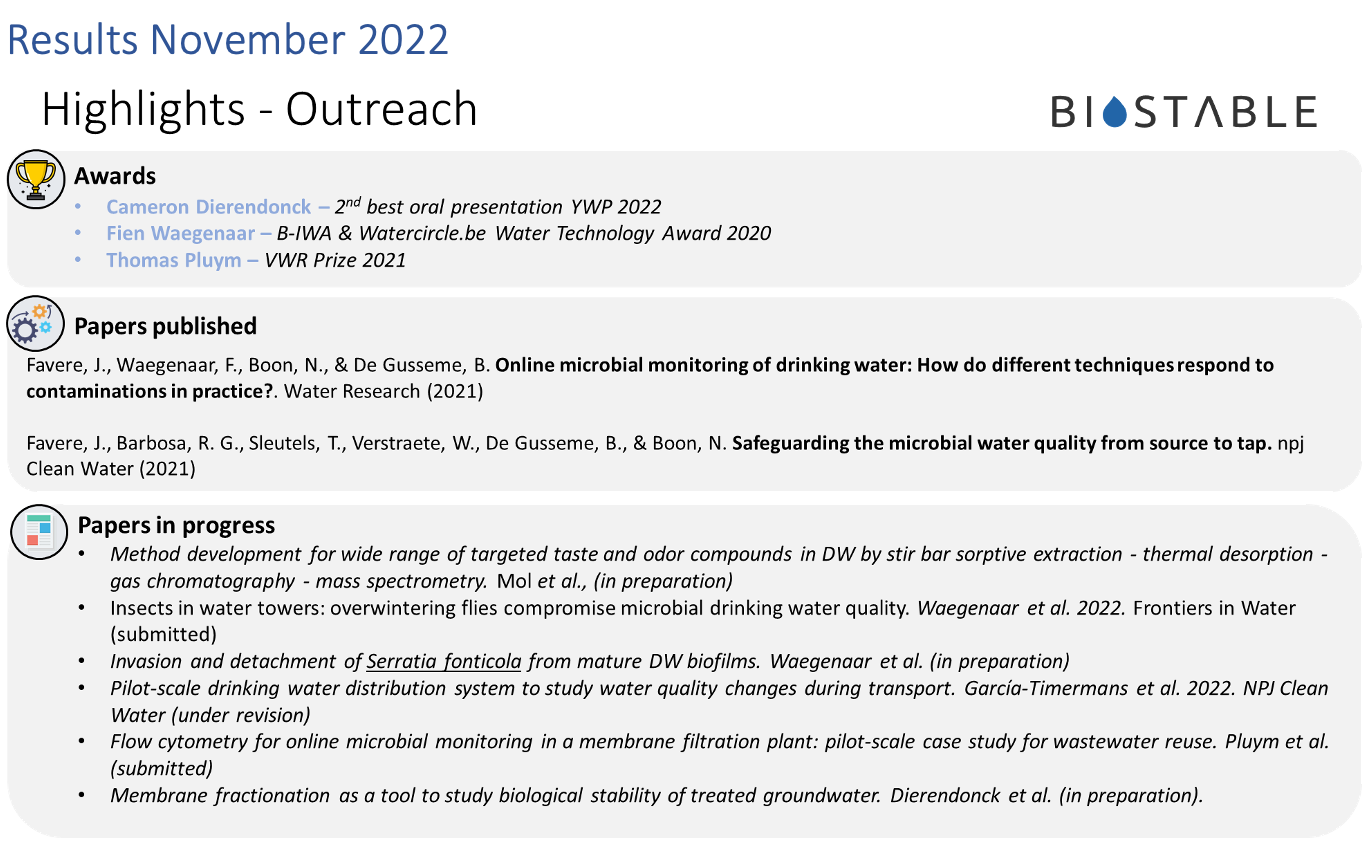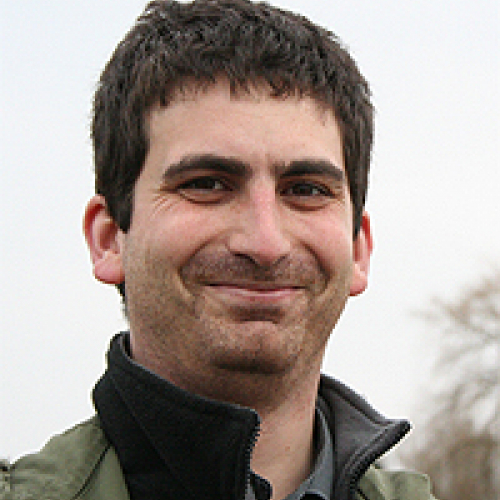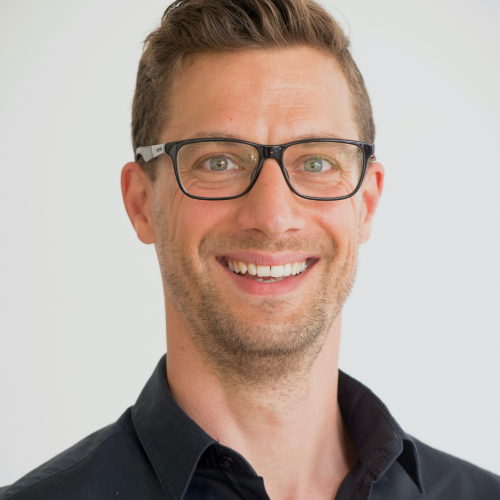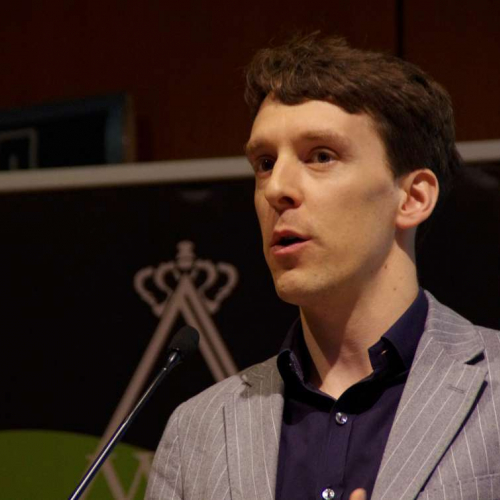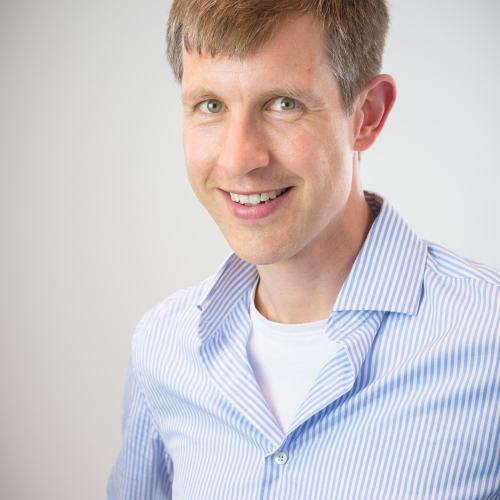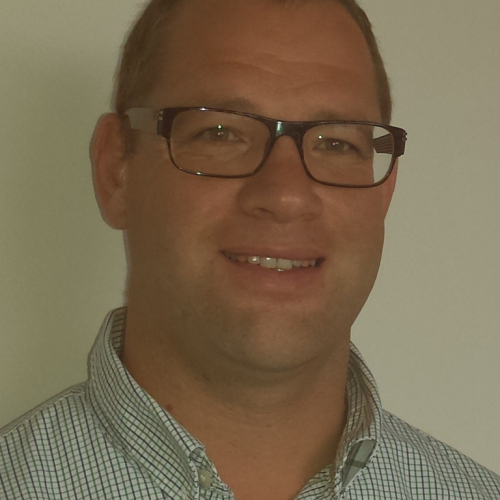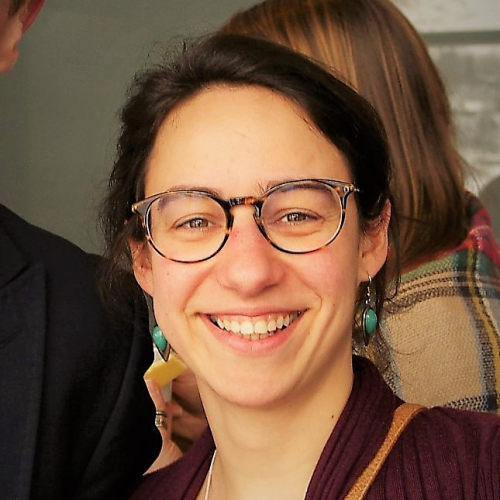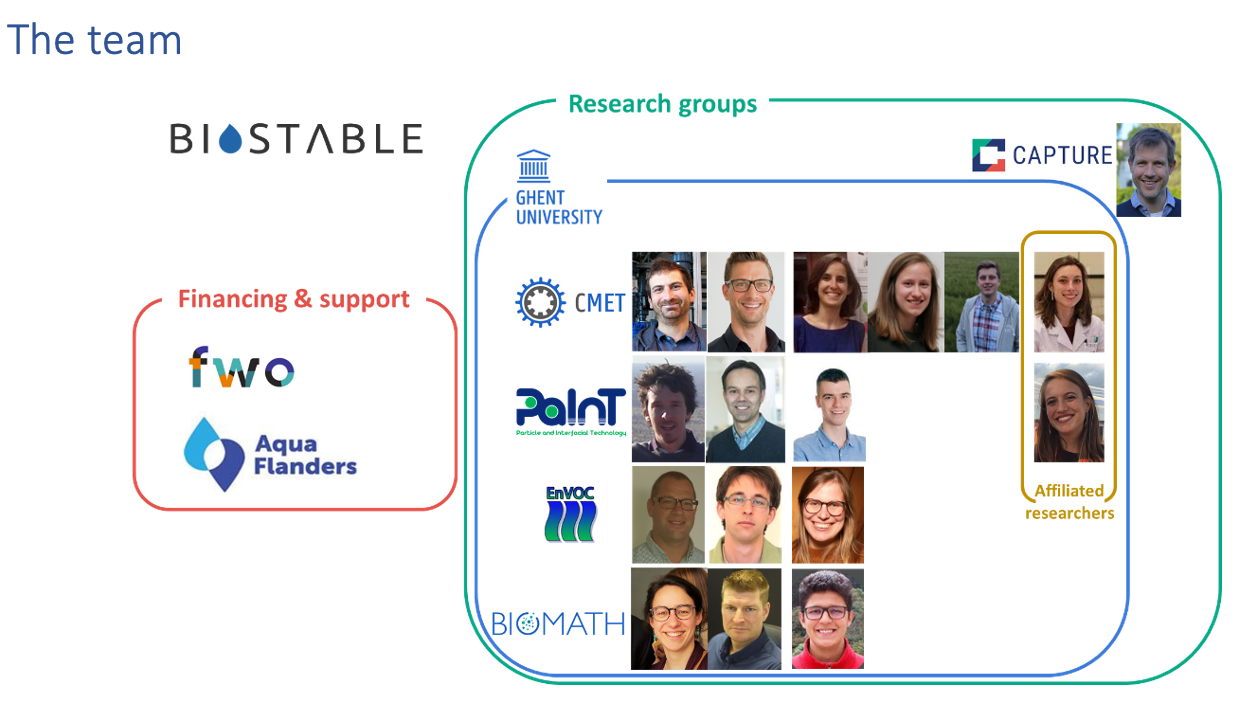
CMET
- Nico Boon (professor)
- Bart De Gusseme (professor)
- Cristina García-Timermans (postdoc)
- Fien Waegenaar (PhD student)
- Thomas Pluym (PhD student)
Paint
- Arne Verliefde (professor)
- Emile Cornelissen (professor)
- Cameron Dierendonck (PhD student)
EnVoc
- Kristof Demeestere (professor)
- Christophe Walgraeve (professor)
- Zöe Mol (PhD student)
Biomath:
- Elena Torfs (professor)
- Ingmar Nopens (professor)
- Cristian Camilo Gómez Cortés (PhD student)
- Saba Daneshgar (postdoc)
Affiliated researchers:
- Jorien Favere (PhD student, CMET)
- Karlien Dejaeger (PhD student, Paint)
CAPTURE:
- Jan Arends
Guaranteeing drinking water quality for citizens was uniformly assessed as an essential theme. This quality is influenced by physicochemical and microbial processes during storage and distribution of drinking water. After all, drinking water is not sterile and microbial regrowth and conversions of organic components in the water can lead to odour and taste complaints, damage to the pipe material and possible contamination with pathogens.
In striving for biostable drinking water without a negative quality change, BIOSTABLE aims to understand the influencing factors and to define unwanted changes. The most important dissolved and undissolved organic fractions in drinking water will be separated and defined. Subsequently, these fractions will be investigated which of them give the most cause for the formation of unwanted disinfection by-products that can give rise to undesirable quality changes in drinking water. BIOSTABLE will develop assays to quantitatively examine their potential for microbial regrowth and the effect of nutrient limitation and organic fractions.
The presence of unwanted organisms is analyzed today by detecting the so-called indicator organisms. An example of this is coliforms, however, not all coliforms are indicators of drinking water contamination. BIOSTABLE aims to make this distinction on a scientific basis and will define new quality indicators based on the latest developments in online microbial monitoring and molecular analyses. Finally, BIOSTABLE will use hydraulic models that make it possible to link the causes of quality changes to the structure of the distribution networks to map the risk areas.
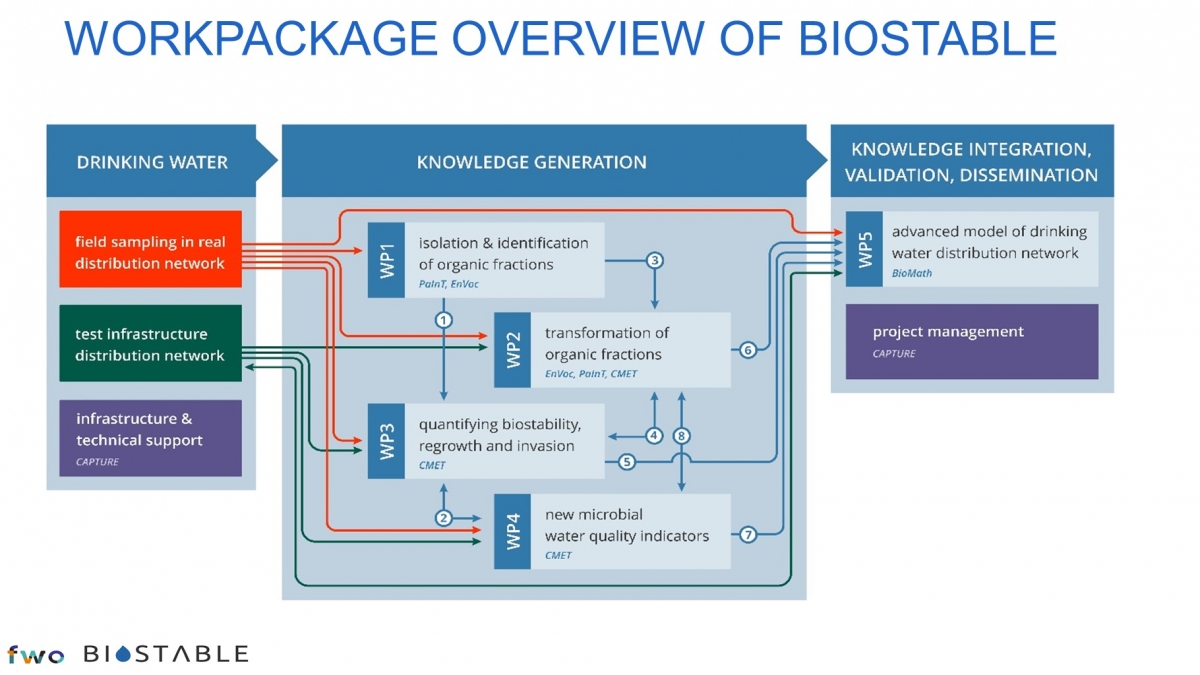
This research will lead to a better understanding of quality changes during distribution and to simulate the impact of changing the operational conditions on the stability of the water quality
